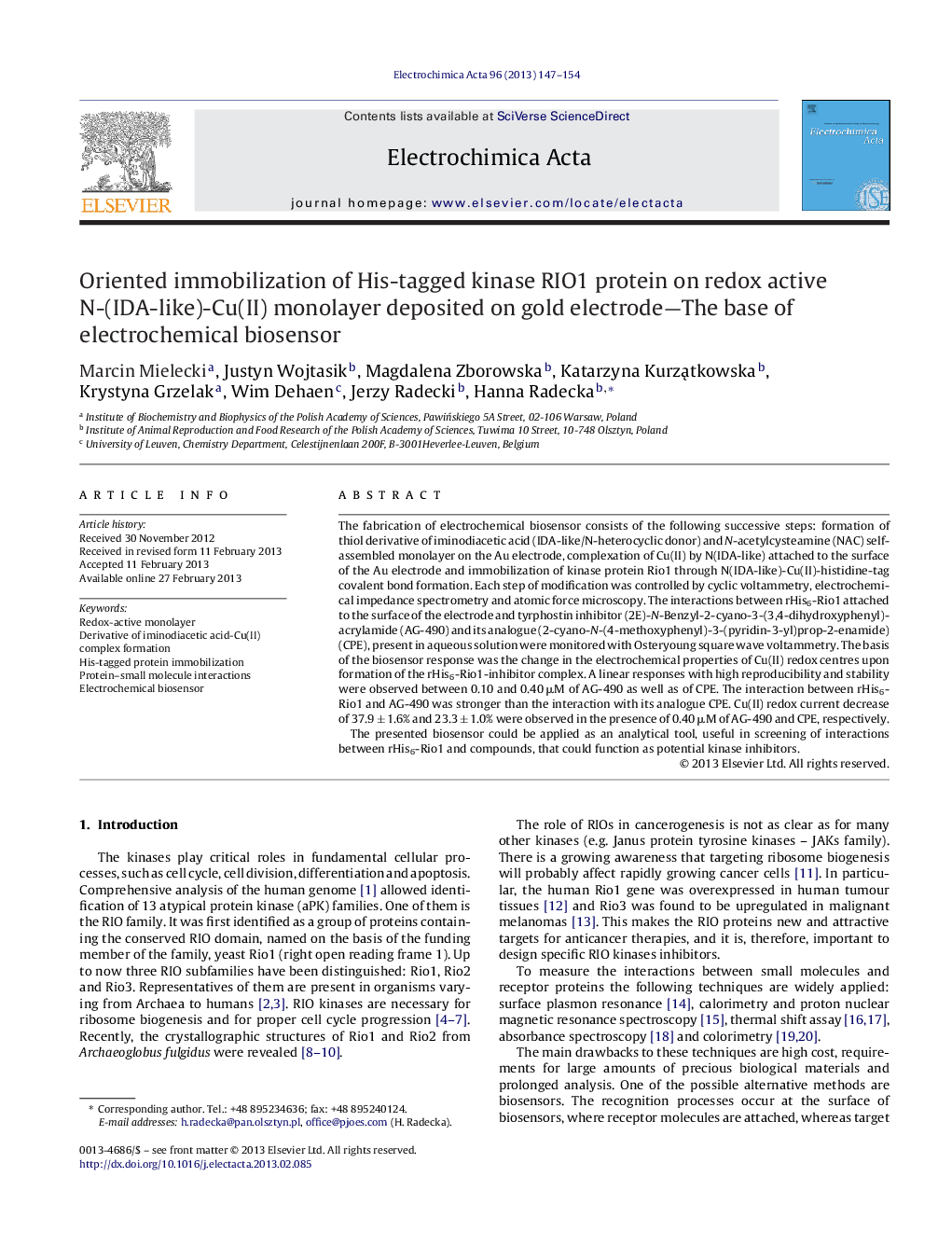| کد مقاله | کد نشریه | سال انتشار | مقاله انگلیسی | نسخه تمام متن |
|---|---|---|---|---|
| 186886 | 459627 | 2013 | 8 صفحه PDF | دانلود رایگان |

The fabrication of electrochemical biosensor consists of the following successive steps: formation of thiol derivative of iminodiacetic acid (IDA-like/N-heterocyclic donor) and N-acetylcysteamine (NAC) self-assembled monolayer on the Au electrode, complexation of Cu(II) by N(IDA-like) attached to the surface of the Au electrode and immobilization of kinase protein Rio1 through N(IDA-like)-Cu(II)-histidine-tag covalent bond formation. Each step of modification was controlled by cyclic voltammetry, electrochemical impedance spectrometry and atomic force microscopy. The interactions between rHis6-Rio1 attached to the surface of the electrode and tyrphostin inhibitor (2E)-N-Benzyl-2-cyano-3-(3,4-dihydroxyphenyl)-acrylamide (AG-490) and its analogue (2-cyano-N-(4-methoxyphenyl)-3-(pyridin-3-yl)prop-2-enamide) (CPE), present in aqueous solution were monitored with Osteryoung square wave voltammetry. The basis of the biosensor response was the change in the electrochemical properties of Cu(II) redox centres upon formation of the rHis6-Rio1-inhibitor complex. A linear responses with high reproducibility and stability were observed between 0.10 and 0.40 μM of AG-490 as well as of CPE. The interaction between rHis6-Rio1 and AG-490 was stronger than the interaction with its analogue CPE. Cu(II) redox current decrease of 37.9 ± 1.6% and 23.3 ± 1.0% were observed in the presence of 0.40 μM of AG-490 and CPE, respectively.The presented biosensor could be applied as an analytical tool, useful in screening of interactions between rHis6-Rio1 and compounds, that could function as potential kinase inhibitors.
Figure optionsDownload as PowerPoint slideHighlights
► The redox active N-(IDA-like)-Cu(II) monolayer is suitable for oriented and stable immobilization of His-tagged kinase Rio1.
► Cu(II) deposited onto the electrode surface play double role: immobilization sites for His-tagged proteins and transduction centres tracking the protein–small molecule interactions.
► The base of biosensor response towards target compound is the change of Rio1 conformation lading to alternation of the permeability of counter ions to Cu(II) redox centres.
Journal: Electrochimica Acta - Volume 96, 30 April 2013, Pages 147–154